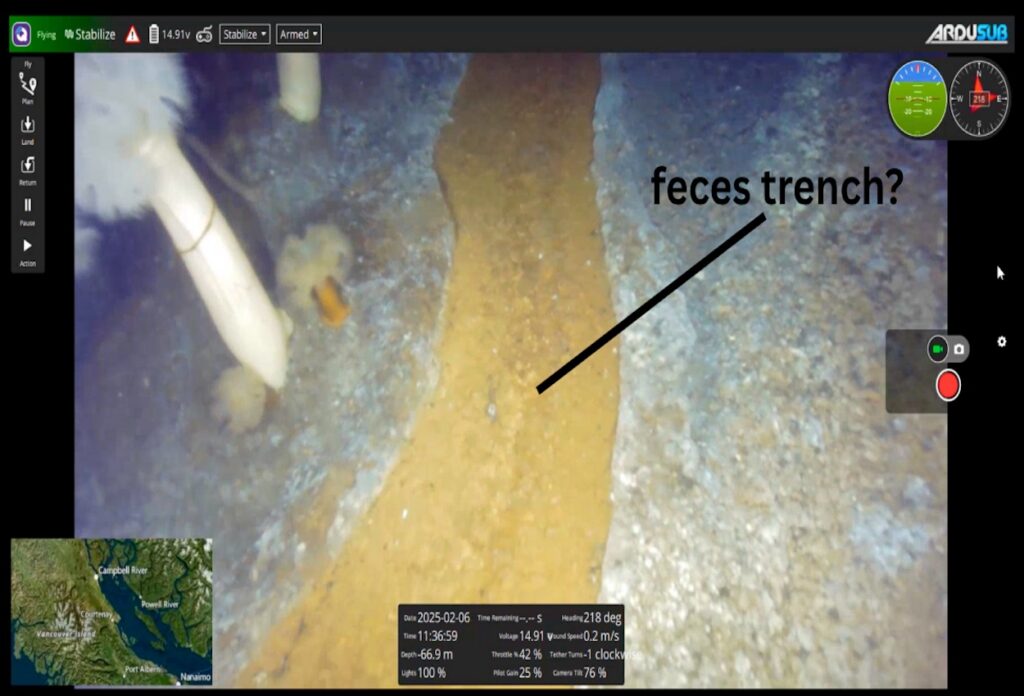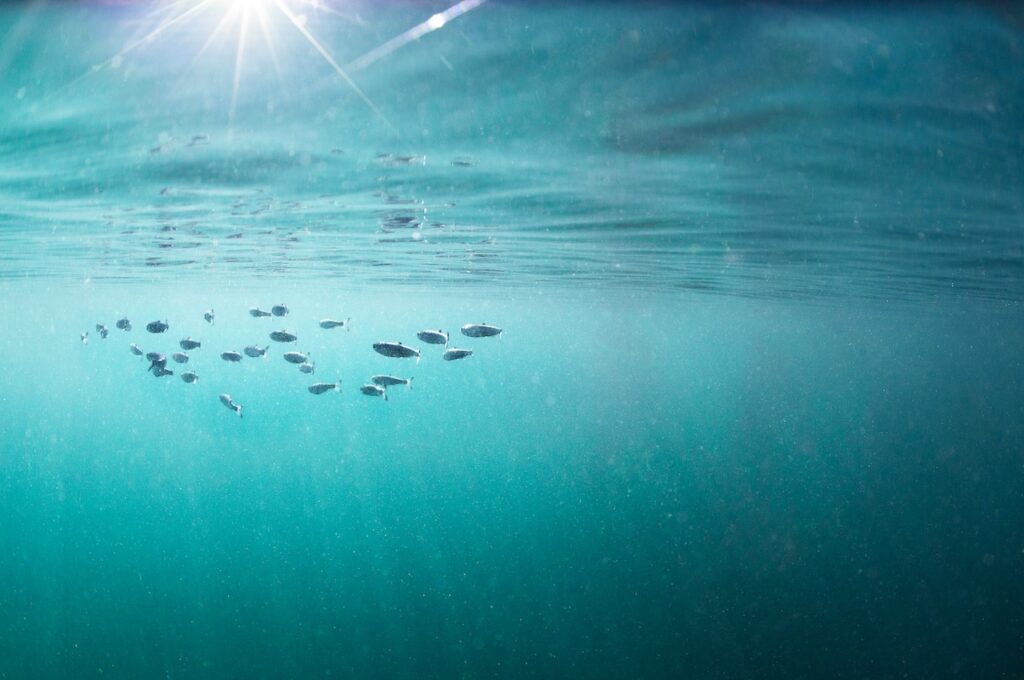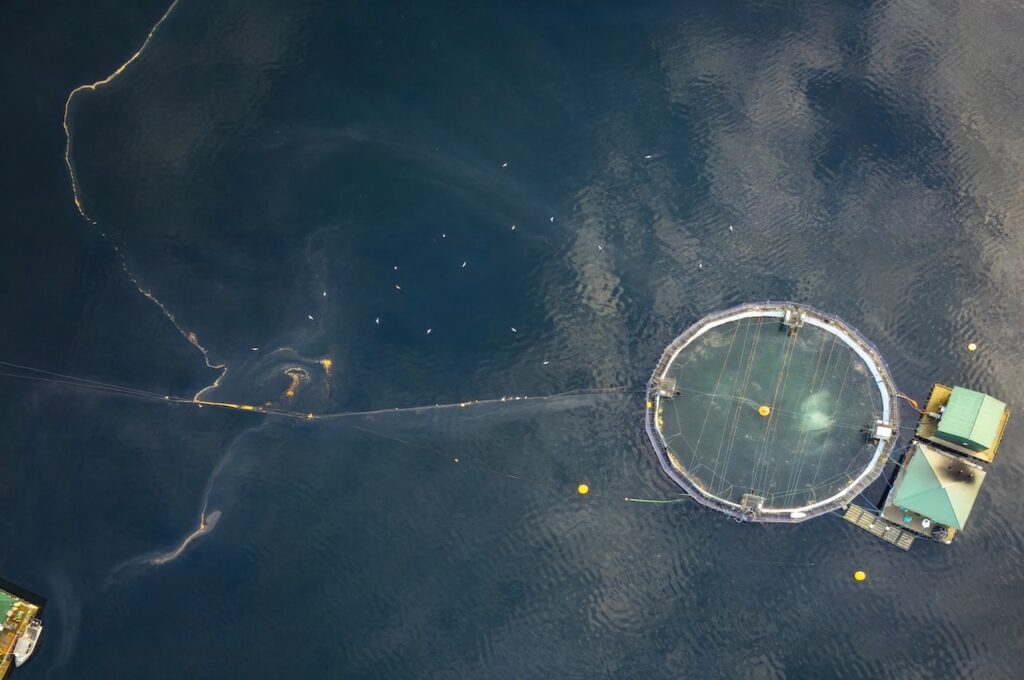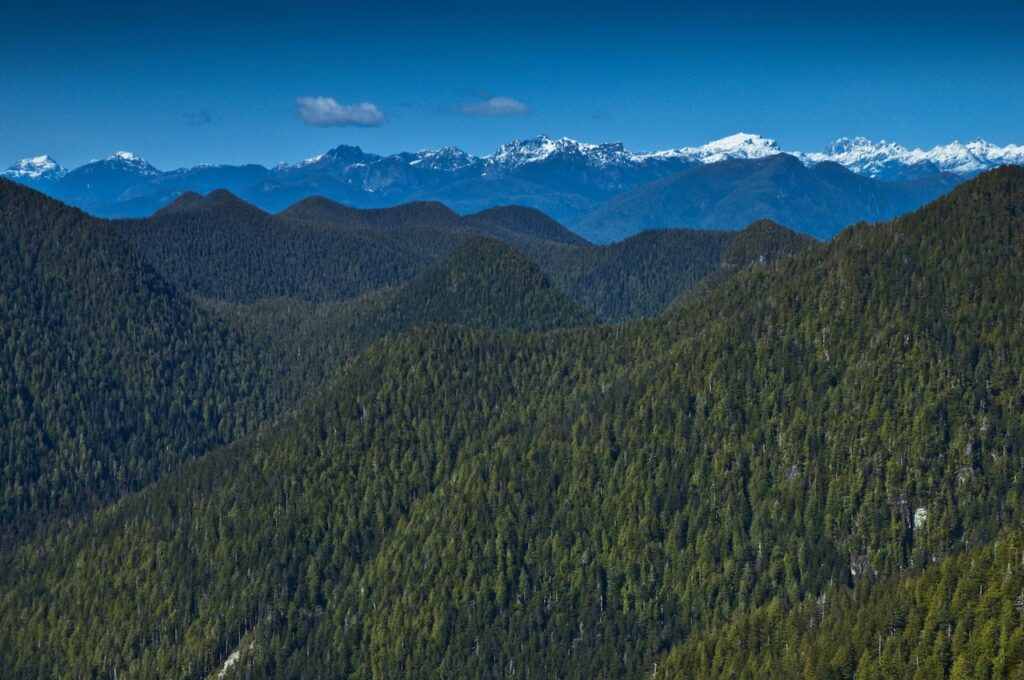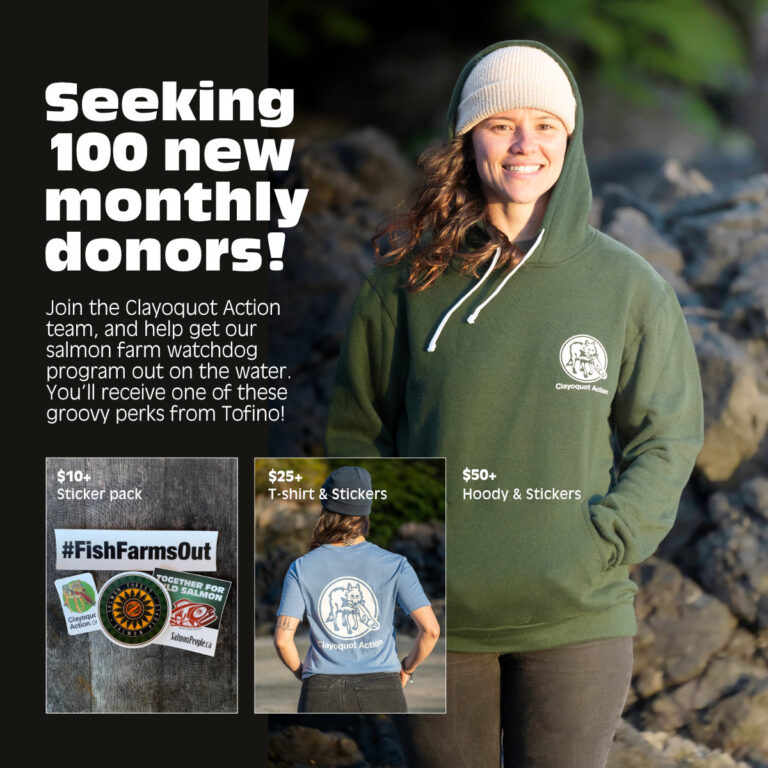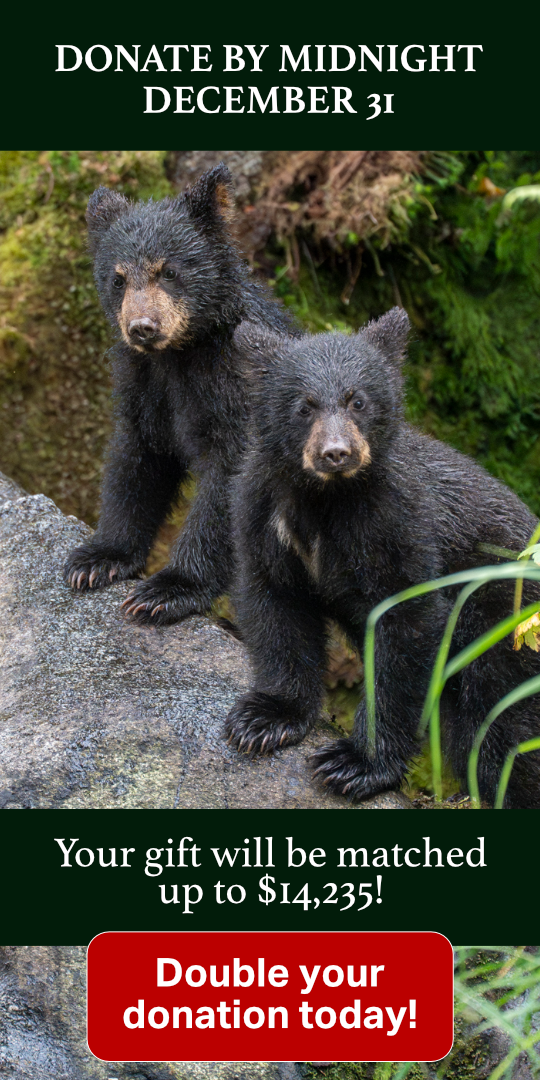We loaded our sampling equipment and camera gear onto Lennie John’s boat, and headed north into his home territory of Ahousaht—to Cermaq’s experimental semi-closed containment facility (SCCS). An hour later his boat slowed as we entered the bay. We dug out our clip boards and went on deck to observe and record.
As we neared the SCCS we were hit by the overwhelming stench of rotting fish. Large slicks of oil covered the water beside the SCCS. Blobs of white fat swirled around. A dive boat was tied up to the SCCS and divers were working inside the pen. The tell-tale signs of a die off…
Cermaq deployed their new experimental salmon production facility in the Clayoquot Sound UNESCO Biosphere Region last fall. It is a semi-closed containment system (SCCS). There is only one other in operation—in Norway, their mother country. Reading what Cermaq says about this system, it quickly becomes apparent that the purpose of this device is not to protect wild salmon—it is to protect their own farmed fish from the negative impacts of salmon farming!
Truly closed containment facilities completely separate farmed salmon from the natural environment. This is what the federal government has committed to doing—complete the transition to closed containment by 2025, in order to protect wild salmon. A study commissioned by the federal government right after that 2019 election promise concluded that in-water closed containment is not yet technologically feasible, and the technology won’t be ready until after the transition is complete. Land-based alternatives are technologically feasible and economically viable, which is why companies around the world are scrambling to develop more of them…
So why are we subsidizing Cermaq’s experiment? Taxpayers paid $752,247 of the $5M price tag—a dead-end investment in a sunset technology.
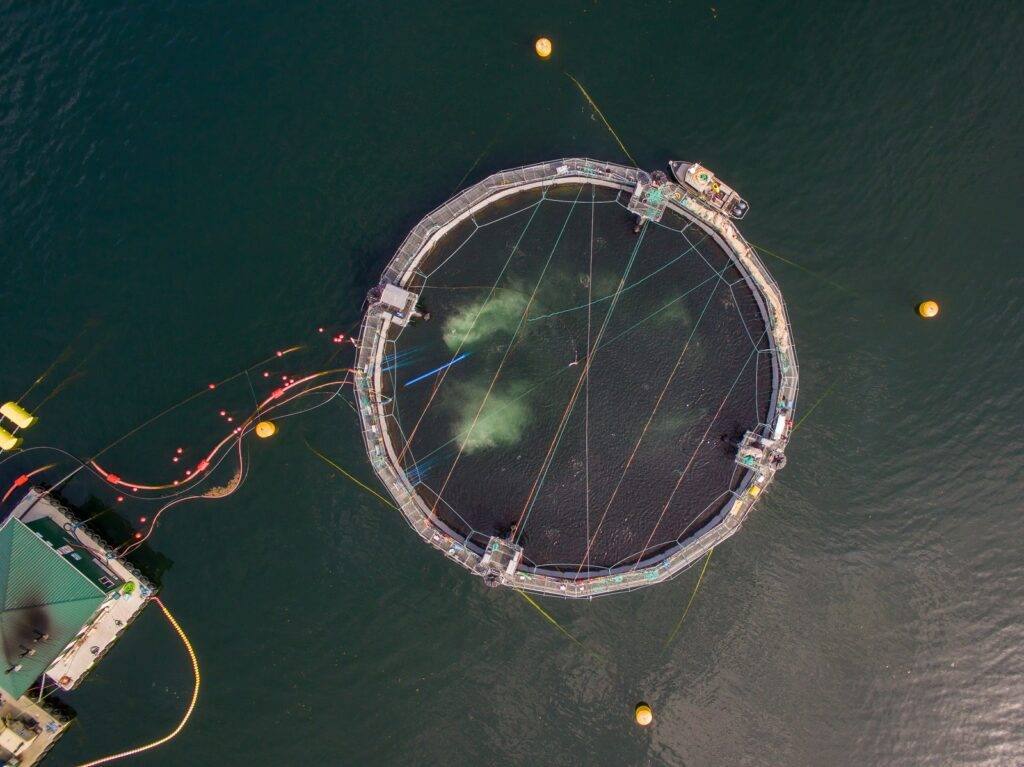
Jellyfish and salmon farms are not a good mix
The blobs of fat we saw that day, and the stench in the air, are familiar signs of a fish farm die-off. It is hard to know what was happening, as Cermaq operates behind a veil of secrecy. If the facility was experiencing some sort of die-off, what could have been the cause?
The bay was choked with jellyfish that day—a variety of species, mostly small. Jellyfish can quickly breed into super-abundances, called blooms, which can indicate an imbalance in the ecosystem. Nutrient loading from open-net pen salmon farms (in the form of uneaten food and the tonnes of fish feces) fertilizes zooplankton (tiny animals in the sea which jellyfish eat). Jellies also compete with wild fish for those zooplankton. Jellyfish can harm fish in several ways: direct stinging, suffocation, and spreading bacterial infections.
Jellyfish can spread bacterial disease, for example mouth rot (caused by a bacterium called Tenacibaculum maritimum). One Scottish study of a salmon farm die-off posited a link between jellyfish and the spread of Tenacibaculum maritimum, finding that the jellyfish were carrying filamentous bacteria (some of which was Tenacibaculum).
Jellyfish reproduce in two different ways. One of those is to attach themselves to artificial structures (like salmon farms). When these organisms are pressure-washed off the structure, enough remains to multiply the pest problem with every cleaning.
Cermaq has been having more and more problems with jellyfish—in 2020 alone, they caused 5 die-offs at Cermaq’s Clayoquot operations. The SCCS pumps the volume of 7+ Olympic swimming pools in and out of the pen, every hour. That’s almost two hundred swimming pools a day, every day. There could be a lot of jellyfish going in, or are they simply plugging up the seawater intake?
Mouth rot in the Discovery Islands
During a recent hearing of the Standing Committee on Fisheries and Oceans, local MP Gord Johns (fisheries critic for the NDP) asked Dr Kristi Miller-Saunders about mouth rot in the Discovery Islands, and asked why the Minister of Fisheries was not informed about Miller’s study showing serious impacts on wild Fraser River sockeye from mouth rot.
Allison Webb, director of DFO’s aquaculture management division, was quoted in the Narwhal, saying “results from wild-salmon screening … highlight Tenacibaculum maritimum as one of the most likely candidates for population-level impacts on wild populations, and present evidence that infections in Fraser River sockeye may originate from salmon-farm sources, especially in the Discovery Island regions…Given knowledge about the depressed state of Fraser River sockeye stocks, the evidence we have presented suggests extreme caution and further research are required”.
Meanwhile, wild salmon populations in Clayoquot Sound are at an all-time historic low—literally on the brink of extinction. And the Department of Fisheries doesn’t seem to know why—although they did decide to pull 19 salmon farms out of the Discovery Islands by 2022.
There is a lot happening on Cermaq’s salmon farms—most of it out of sight, thus out of mind. The only way to really see what is going on is to get out there in the field. Clayoquot Action’s CSI missions (Clayoquot Salmon Investigation) will continue to monitor Cermaq’s activities until the last fish farm comes out of Clayoquot Sound.
Dan Lewis is Executive Director of Clayoquot Action.
Jeremy Mathieu photos

